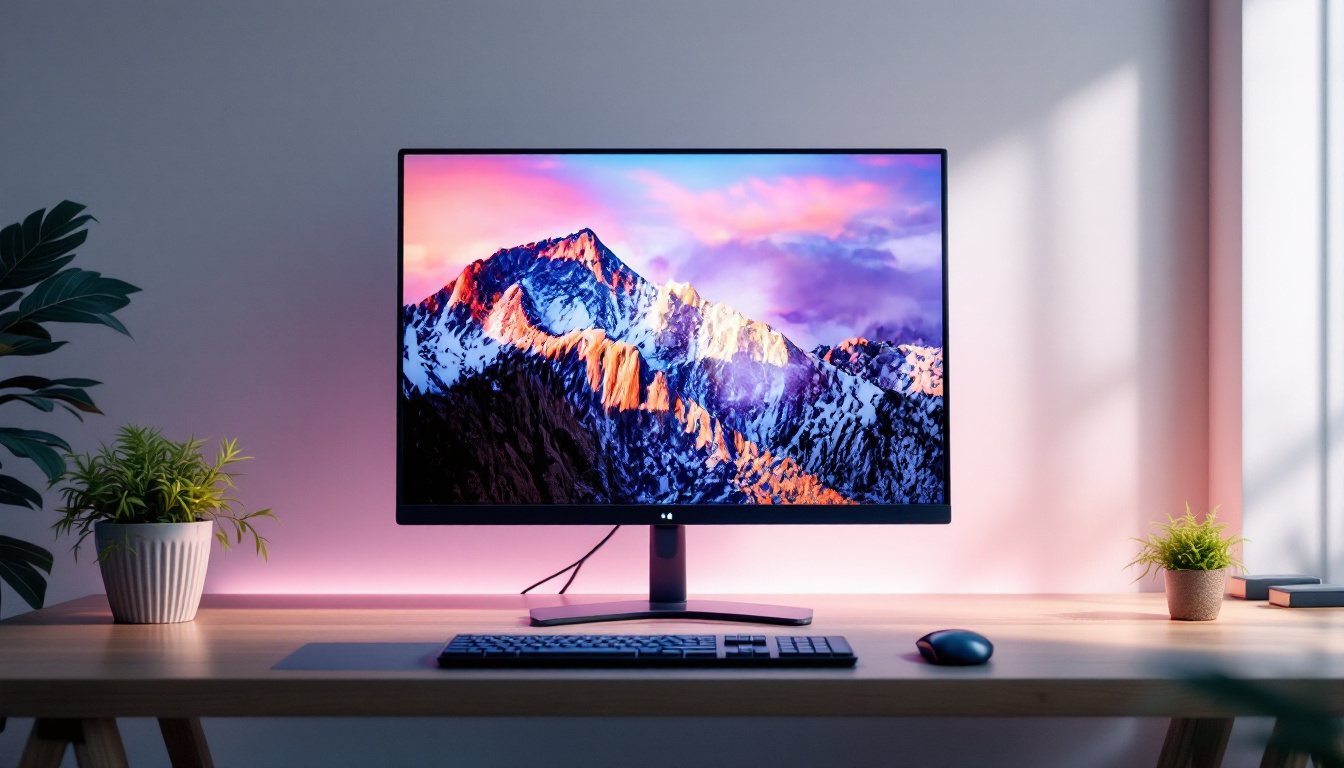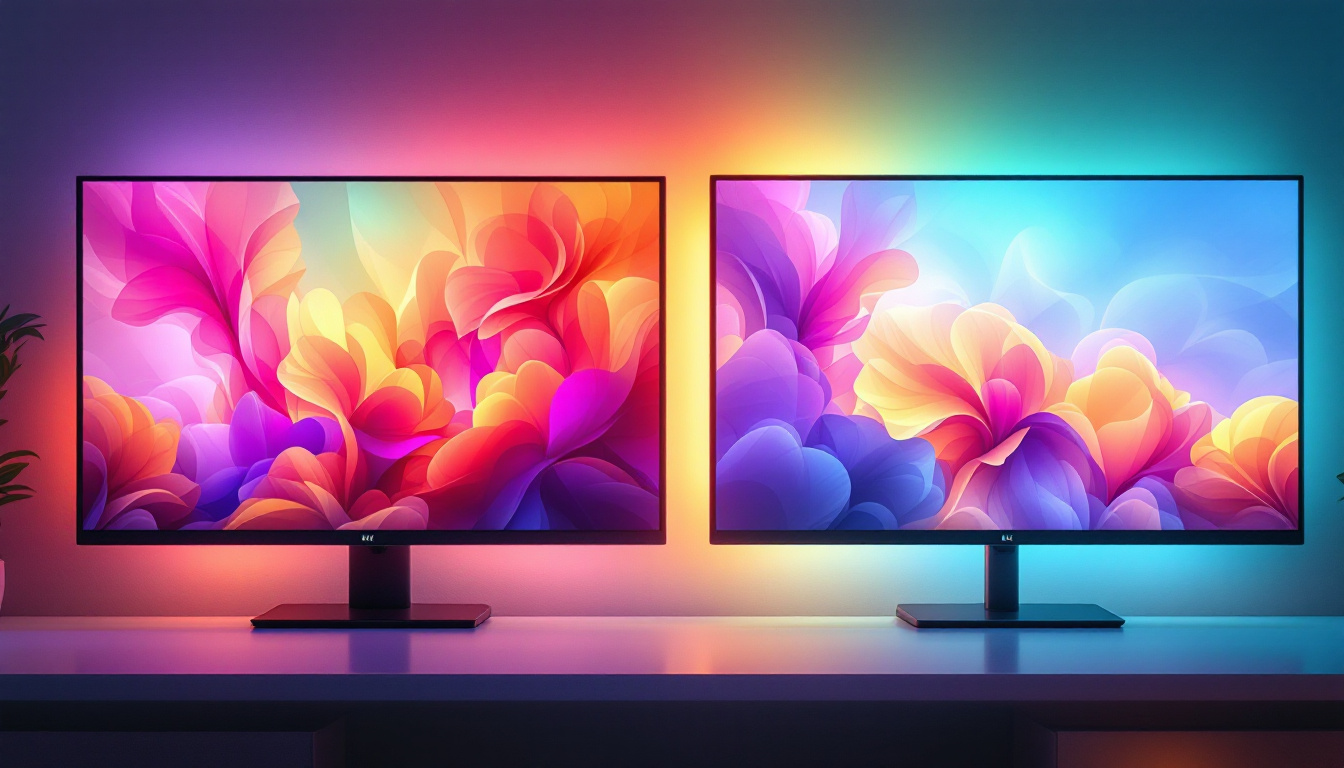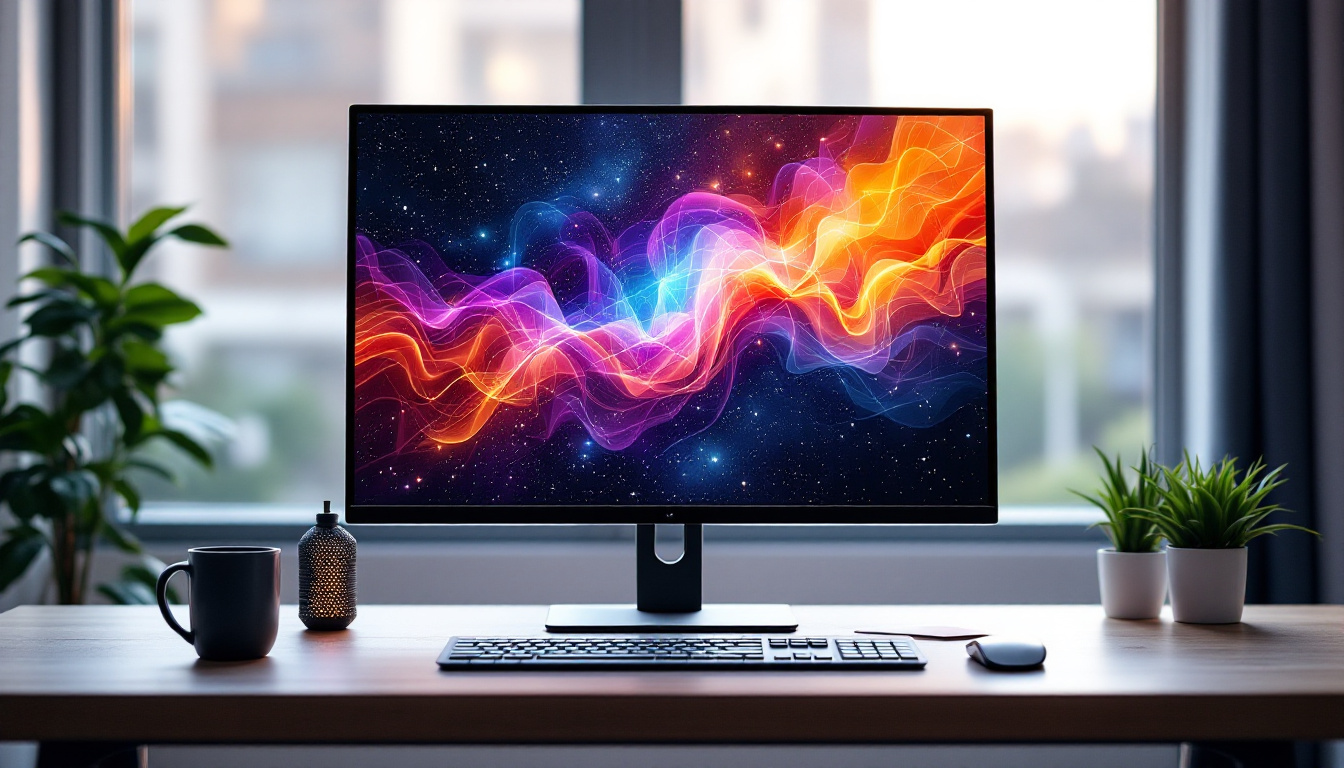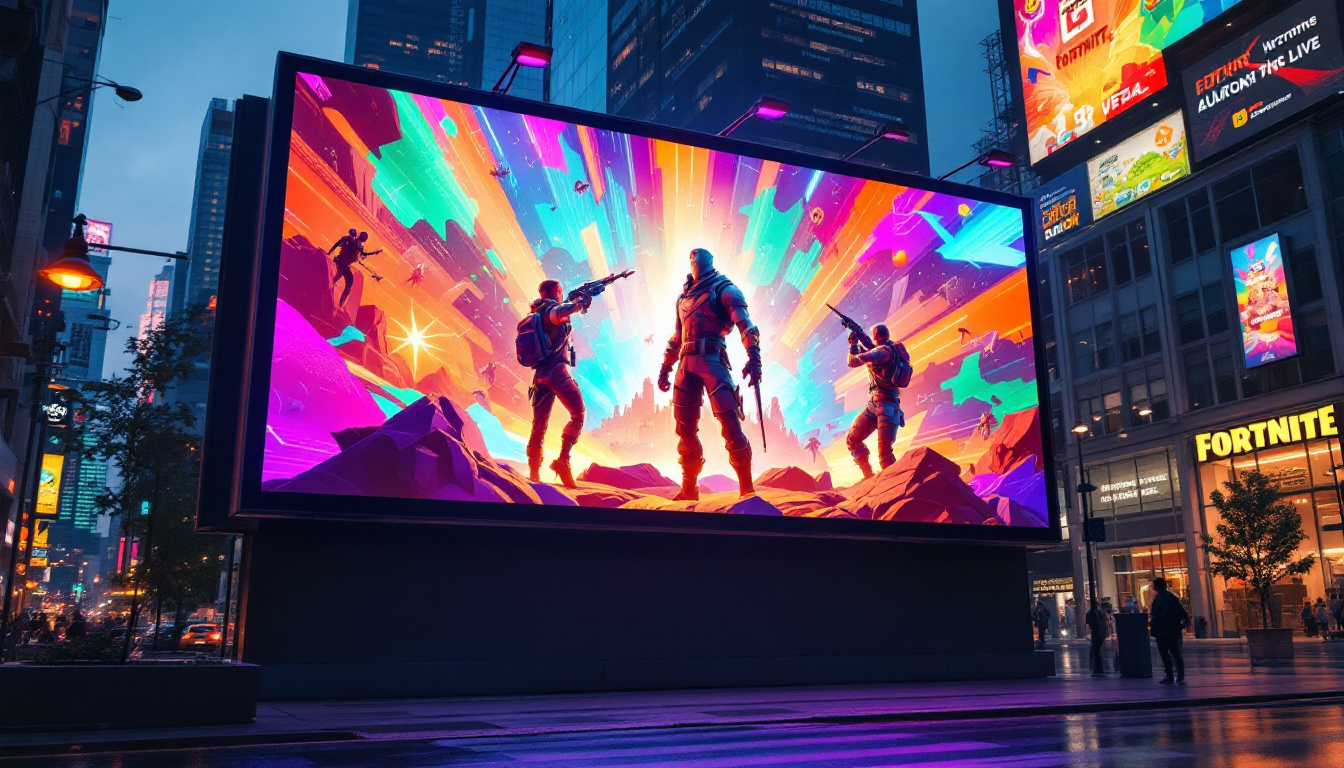In the rapidly evolving world of digital displays, understanding the nuances of connection standards is crucial for both professionals and enthusiasts. DisplayPort, a widely adopted interface for transmitting video and audio from a source to a display, has seen several iterations, each improving on the last. Among these, DisplayPort 1.4 and its slightly updated version, DisplayPort 1.4a, often cause confusion. This article delves into the differences between DisplayPort 1.4 and 1.4a, particularly in the context of LED displays, to help you make informed decisions about your display setups.
Understanding DisplayPort: A Brief Overview
DisplayPort is a digital display interface developed by the Video Electronics Standards Association (VESA) primarily to connect a video source to a display device such as a computer monitor. It supports high resolutions, high refresh rates, and multiple audio channels, making it a preferred choice for gaming, professional graphics work, and multimedia consumption.
Since its introduction in 2006, DisplayPort has undergone several revisions. Each iteration has enhanced bandwidth, introduced new features, and improved compatibility with emerging display technologies. DisplayPort 1.4, released in 2016, marked a significant step forward, supporting higher resolutions and HDR content, which are critical for modern LED displays.
One of the standout features of DisplayPort is its ability to daisy-chain multiple monitors using a single connection. This is made possible through Multi-Stream Transport (MST), which allows users to connect several displays in a series, reducing cable clutter and simplifying setups. This capability is particularly beneficial for professionals who require extensive screen real estate for tasks such as video editing or data analysis. Moreover, the versatility of DisplayPort extends beyond just monitors; it can also be used with various devices, including docking stations and projectors, enhancing its utility in both personal and professional environments.
Another important aspect of DisplayPort is its support for Adaptive Sync technology, which helps eliminate screen tearing and stuttering during gaming. This feature allows the display to synchronize its refresh rate with the frame rate of the graphics card, resulting in a smoother visual experience. With the rise of competitive gaming and high-performance graphics cards, the demand for such technologies has surged, making DisplayPort an essential component for gamers seeking the best performance. Additionally, the latest versions of DisplayPort have incorporated support for Display Stream Compression (DSC), which allows for even higher resolutions and refresh rates without compromising image quality, further solidifying its position as a leading display interface in the market.
DisplayPort 1.4: Features and Capabilities
Bandwidth and Resolution Support
DisplayPort 1.4 offers a maximum bandwidth of 32.4 Gbps (gigabits per second), with an effective data rate of 25.92 Gbps after encoding overhead. This bandwidth supports impressive display resolutions and refresh rates. For instance, it can handle 8K resolution (7680×4320 pixels) at 60 Hz with Display Stream Compression (DSC) 1.2, or 4K resolution at 120 Hz without compression.
This capability is particularly important for LED displays, which often demand high pixel density and smooth motion rendering. The ability to support HDR10 and Hybrid Log-Gamma (HLG) also means that DisplayPort 1.4 can transmit high dynamic range content, enhancing color depth and contrast for more vivid images. Additionally, the support for a wider color gamut, including Rec. 2020, allows for more accurate and vibrant color reproduction, making it an ideal choice for graphic designers and video editors who require precision in their work.
Display Stream Compression (DSC) 1.2
One of the standout features of DisplayPort 1.4 is the inclusion of DSC 1.2, a visually lossless compression technology. DSC allows higher resolutions and refresh rates to be transmitted over the same bandwidth without noticeable quality degradation. This is essential for LED displays pushing beyond 4K resolutions or aiming for ultra-smooth 120 Hz or higher refresh rates. The technology is particularly beneficial in gaming scenarios, where high frame rates and resolutions can significantly enhance the overall experience, providing gamers with a competitive edge through smoother visuals and reduced latency.
Multi-Stream Transport (MST)
DisplayPort 1.4 supports MST, which enables multiple independent displays to be driven from a single DisplayPort output. This is particularly useful in professional environments where multiple LED monitors are used for expanded workspace or video walls. By daisy-chaining monitors, users can create an immersive multi-display setup without the clutter of multiple cables and ports. This feature not only streamlines the workspace but also enhances productivity, allowing users to multitask efficiently by having several applications open across different screens. Furthermore, MST is advantageous for creative professionals who often require extensive screen real estate for design software, video editing tools, or coding environments.
Moreover, MST can also facilitate presentations and collaborative work by allowing multiple screens to display the same content simultaneously, which is particularly useful in educational settings or corporate meetings. The ability to customize each display’s resolution and refresh rate independently adds another layer of flexibility, catering to diverse user needs and preferences. This adaptability makes DisplayPort 1.4 a versatile choice for both personal and professional setups, ensuring that users can maximize their visual experience across various applications.
Introducing DisplayPort 1.4a: What’s New?
DisplayPort 1.4a was introduced as a minor update to the 1.4 standard. Unlike major revisions that bring sweeping changes, 1.4a focuses on improving the reliability and interoperability of the existing features rather than adding new capabilities.
Enhanced Link Training
The primary enhancement in DisplayPort 1.4a is the refinement of link training protocols. Link training is the process by which the source and display negotiate the optimal data transmission parameters to ensure a stable and error-free connection. DisplayPort 1.4a improves this process, reducing the chances of signal loss or flickering, especially at higher resolutions and refresh rates.
Improved Compliance and Interoperability
DisplayPort 1.4a also includes updates to the compliance test specifications. These updates help manufacturers ensure that their devices meet stricter standards for compatibility and performance. This results in better interoperability between various sources and LED displays, minimizing issues such as handshake failures or inconsistent color reproduction.
Maintaining Backward Compatibility
Importantly, DisplayPort 1.4a maintains full backward compatibility with 1.4 devices. This means that users do not need to upgrade their entire setup to benefit from the improvements offered by 1.4a-compliant hardware.
Comparing DisplayPort 1.4 and 1.4a in LED Display Applications
Performance Differences in Real-World Usage
From a purely technical standpoint, the bandwidth and feature set of DisplayPort 1.4 and 1.4a are identical. However, the enhanced link training and compliance improvements in 1.4a translate to more reliable performance in practical scenarios.
For example, users running high-resolution LED displays at 4K 120 Hz or 8K 60 Hz might notice fewer signal drops or flickering issues when using 1.4a-certified cables and devices. This stability is crucial in professional environments such as video editing, CAD design, or medical imaging, where display interruptions can disrupt workflow or compromise accuracy.
Impact on LED Display Quality
Both standards support HDR and DSC 1.2, so the potential image quality on LED displays remains consistent across 1.4 and 1.4a. The difference lies in the consistency of that quality. Improved link training in 1.4a helps maintain stable color reproduction and reduces artifacts caused by transmission errors.
Compatibility Considerations
Since 1.4a is backward compatible, users with existing 1.4 hardware can upgrade to 1.4a devices without losing functionality. However, to fully benefit from 1.4a’s improvements, all components in the signal chain—including the source device, cable, and display—should support the 1.4a specification.
Why Does This Matter for LED Displays?
LED displays, especially those used in professional or high-end consumer applications, demand high bandwidth and stable connections to deliver their full potential. The subtle improvements in DisplayPort 1.4a address some of the practical challenges encountered with high-resolution, high-refresh-rate LED panels.
For instance, in gaming setups where 4K at 120 Hz or ultrawide monitors are becoming mainstream, even minor signal instability can cause noticeable flicker or frame drops. Similarly, in digital signage or video walls composed of multiple LED panels, reliable multi-stream transport and stable connections are essential for seamless visuals.
HDR and Color Accuracy
HDR content is increasingly prevalent, and LED displays benefit greatly from accurate color reproduction and deep contrast ranges. DisplayPort 1.4 and 1.4a’s support for HDR10 and HLG ensures that LED displays can showcase this content effectively. The improved signal integrity of 1.4a helps maintain this accuracy without interruptions.
Future-Proofing Your Setup
While DisplayPort 2.0 is on the horizon with even higher bandwidth capabilities, many current devices still rely on DisplayPort 1.4 standards. Choosing 1.4a-compliant hardware can be seen as a future-proofing step, ensuring better reliability and compatibility with upcoming LED display technologies and firmware updates.
Practical Tips for Choosing Between DisplayPort 1.4 and 1.4a
Check Device Specifications
When purchasing monitors, graphics cards, or cables, verify whether the product explicitly supports DisplayPort 1.4a. Manufacturers often list compliance details in technical specifications or product datasheets.
Invest in High-Quality Cables
Cable quality plays a significant role in maintaining signal integrity. Certified DisplayPort 1.4a cables undergo rigorous testing to ensure they meet the enhanced link training and compliance requirements. Investing in these cables can reduce connectivity issues and improve overall display performance.
Consider Your Use Case
If your setup involves standard 4K resolution at 60 Hz or lower, the differences between 1.4 and 1.4a may be negligible. However, for high-refresh-rate gaming, professional color grading, or multi-monitor configurations, opting for 1.4a-compliant hardware can provide smoother and more reliable performance.
Firmware Updates and Driver Support
Ensure that your graphics card drivers and monitor firmware are up to date. Manufacturers often release updates that improve compatibility with newer DisplayPort standards, including 1.4a enhancements.
Conclusion: DisplayPort 1.4 vs 1.4a – Making the Right Choice for LED Displays
DisplayPort 1.4 and 1.4a share the same core capabilities, delivering high bandwidth, support for 8K resolution, HDR, and DSC compression essential for today’s advanced LED displays. The key difference lies in the refinements introduced by 1.4a, which enhance link training protocols and compliance testing to ensure more stable and reliable connections.
For users and professionals relying on LED displays for gaming, content creation, or digital signage, these improvements can translate into fewer disruptions, better color accuracy, and overall improved user experience. While the choice between 1.4 and 1.4a may not dramatically impact everyday use at lower resolutions or refresh rates, investing in 1.4a-compliant hardware is a sensible step toward future-proofing and maximizing the performance of high-end LED display setups.
Ultimately, understanding these subtle differences empowers consumers and professionals alike to optimize their display environments, ensuring that their LED displays perform at their best, delivering crisp, vibrant, and stable visuals every time.
Explore Cutting-Edge LED Display Solutions with LumenMatrix
Ready to elevate your visual experience with the latest in LED display technology? LumenMatrix is at the forefront of innovation, offering a wide range of LED display solutions tailored to your needs. Whether you’re looking to enhance your brand’s visibility, create immersive environments, or captivate your audience with high-resolution, stable, and vibrant visuals, LumenMatrix has you covered. From Indoor and Outdoor LED Wall Displays to Custom and All-in-One LED solutions, our displays are designed to revolutionize visual communication and engagement. Don’t settle for less—check out LumenMatrix LED Display Solutions today and share your message with impact and clarity.































